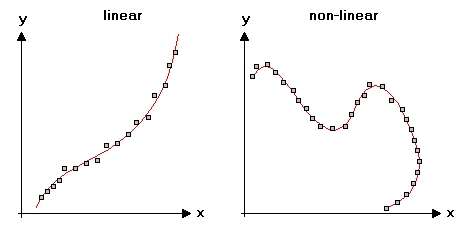| Fundamentals of Statistics contains material of various lectures and courses of H. Lohninger on statistics, data analysis and chemometrics......click here for more. |

|

Home  Multivariate Data Multivariate Data  Basic Knowledge Basic Knowledge  Structure of Measured Data Structure of Measured Data |
|
| See also: data, linear vs. nonlinear models, Distance Matrix | |
Structure of Measured DataIn order to apply any method of data analysis, you have to be knowledgable about the structure of your data. Depending on the kind of analysis (classification or calibration), you should look for several aspects of the data set. In the case of classification problems, there are basically three cases to be distinguished:
 Of all three cases the user should be aware that in the multi-dimensional case, it is not a trivial task to decide which type of problem is being addressed. Furthermore, the selection of the most suitable predictors strongly depends on these issues. So, in general, one has to try out and experiment with the data before setting up a classifier. In the case of calibration problems, there are two aspects which should be considered prior to building a model:
 Again, this decision is not easily made and is even more complicated
by noise in the data. In the case of extensive noise, a possible non-linear
relationship is often covered by the noise, thus making it impossible to
create a non-linear model.
|
|
Home  Multivariate Data Multivariate Data  Basic Knowledge Basic Knowledge  Structure of Measured Data Structure of Measured Data |
|

